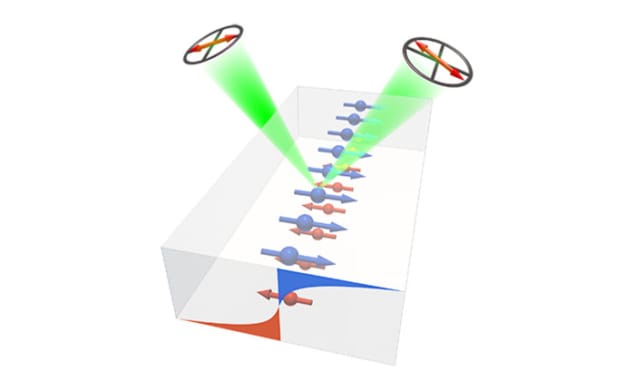
Physicists in Switzerland and Sweden say they are the first to use an optical technique to make direct measurements of the spin accumulation associated with the spin Hall effect.
When an electrical current passes through a thin strip made of certain materials, spin-up electrons tend to accumulate at one edge of the strip and spin-down electrons at the opposite edge of the strip. Called the spin Hall effect, it is the result of the spin–orbit interaction between the intrinsic spin of the electron and the magnetic field created by its relative motion to the ions that make up the material.
This spin accumulation at the edges is usually measured indirectly by placing a magnetic material next to the strip – but this can have detrimental effects on the measurement.
Polarization rotation
Now, Pietro Gambardella and colleagues at ETH Zürich and Uppsala University have used an established technique called magneto-optical Kerr microscopy to make direct measurements of the accumulated spin. This involves shining a laser on metallic strips and measuring the rotation of the polarization of the reflected light. The magnitude and direction of this Kerr rotation is proportional to the spin polarization where the reflection occurs.
Measurements on thin films of platinum and tungsten confirmed that spin accumulation occurs in both materials. The team was also able to show that the spin diffusion length in the platinum film was about 11 nm, which is significantly larger than that measured for a platinum film that is adjacent to a magnetic material.
Writing in Physical Review Letters, the researchers say that the optical technique could be further developed to study the spin dynamics of materials with strong spin–orbit interactions.



